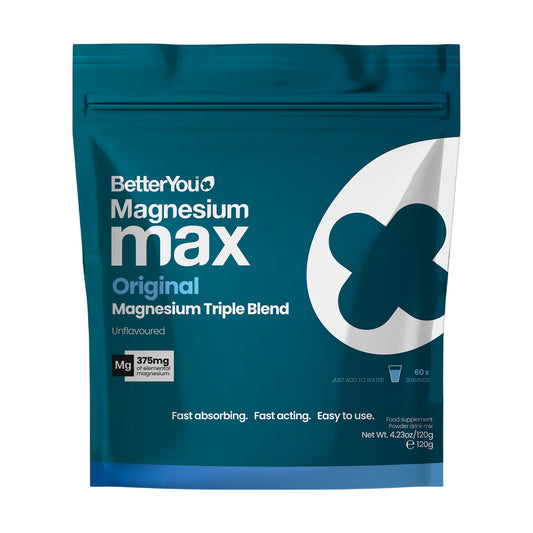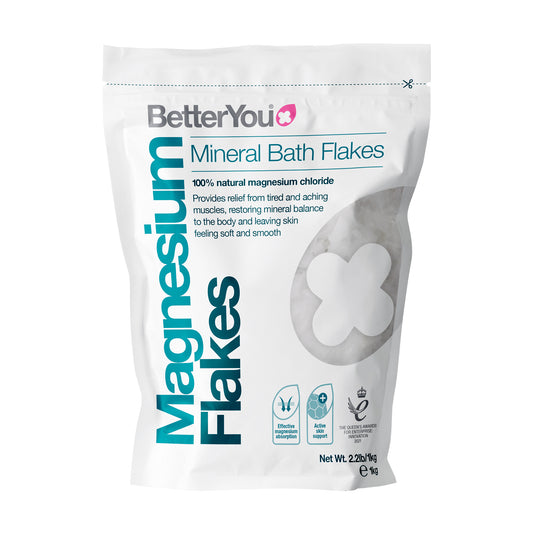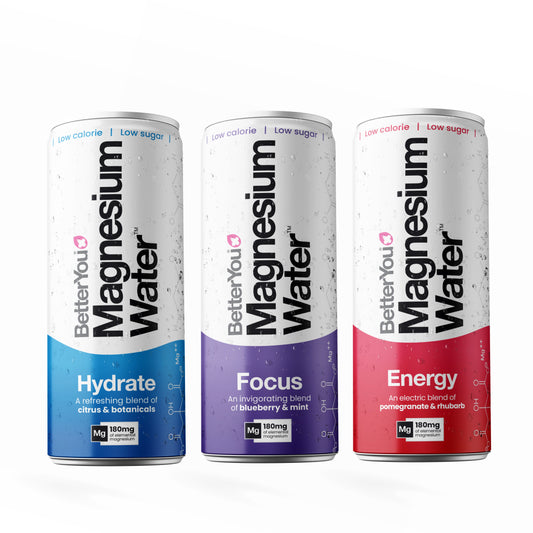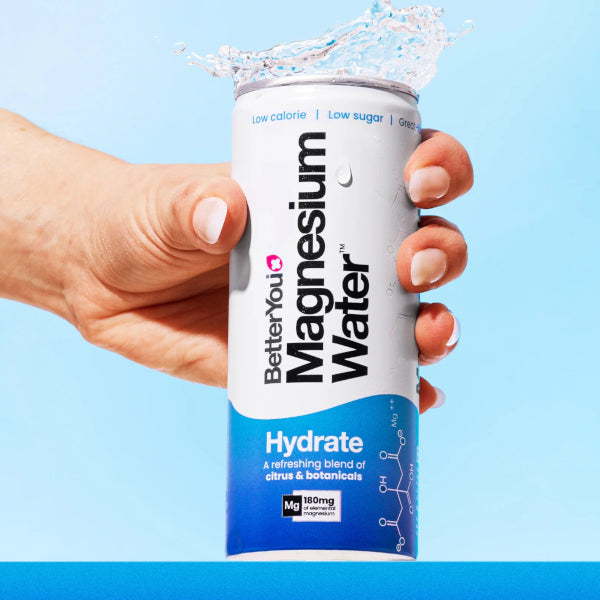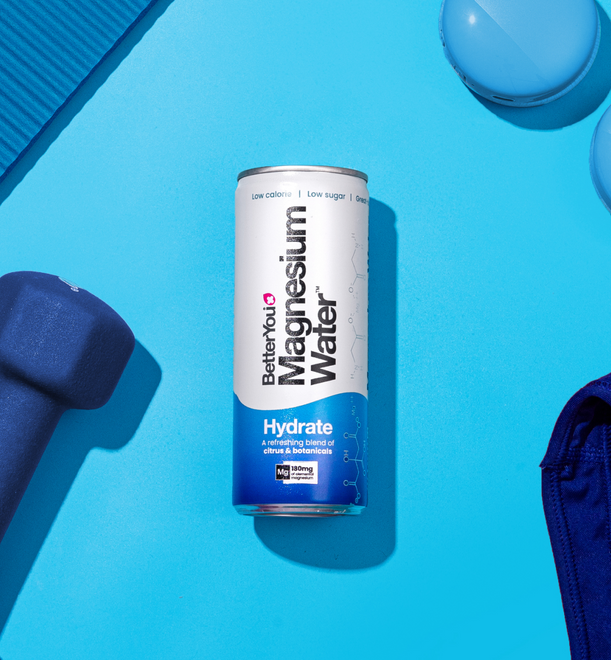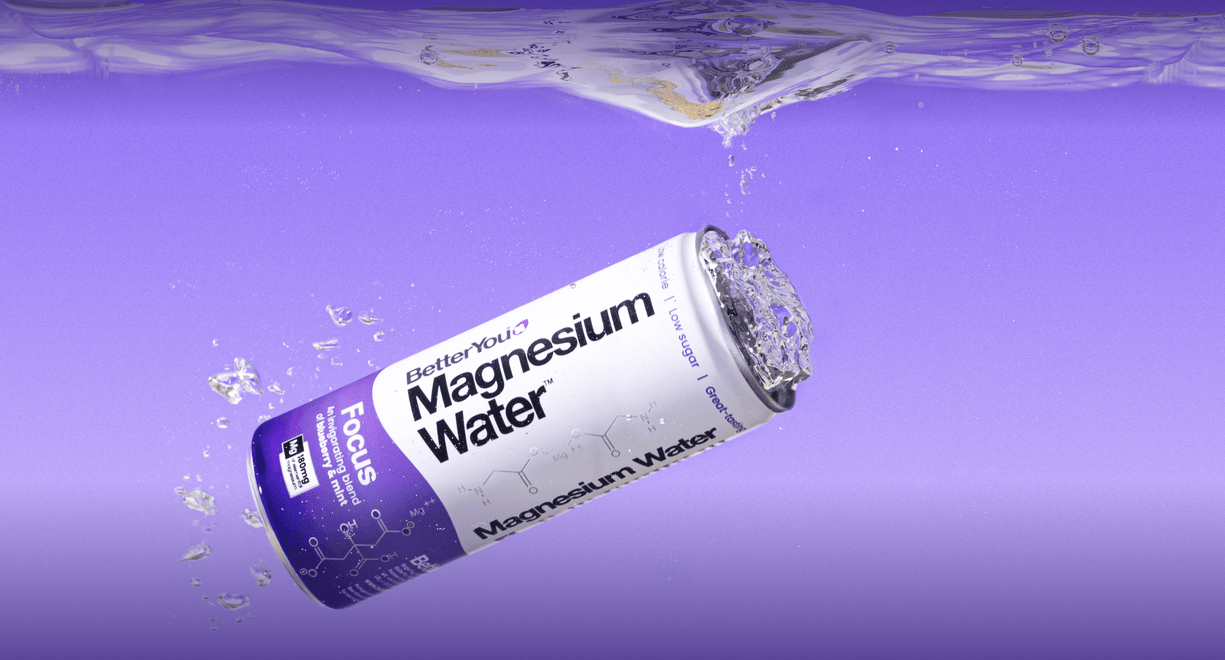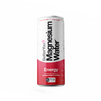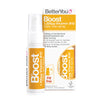The different forms of magnesium can each help to support your body in gaining the benefits of the mineral. The forms are often found in different types of supplements, which may determine how you achieve your optimum intake. Our guide shows you some of the different forms of magnesium supplements and which are best for you.
Table of Contents:
- What Are the Different Forms of Magnesium?
- What Forms of Magnesium Supplements are Best to Use
- How Much Magnesium to Take?
- Benefits of the Different Forms of Magnesium
- 3 Signs of Magnesium Deficiency
What Are the Different Forms of Magnesium?
Magnesium is a mineral and electrolyte, known by its chemical formula Mg. Magnesium supplements may contain multiple forms of magnesium to support your intake of this essential mineral.
This type of mineral is a metallic element which usually exists in a compound alongside a non-metallic element. These compounds are known as salts. Common forms of magnesium salts include:
Magnesium Chloride
Magnesium chloride, with the chemical formula MgCl2, is the active ingredient found in our topical magnesium supplements. This is a very pure form of the mineral which can be used to create magnesium bath flakes which dissolve in warm water, allowing for the magnesium to separate from the chloride ions.
Magnesium Glycinate
This form of magnesium contains both magnesium and the amino acid glycine. Magnesium glycinate, or (C4H8MgN2O4) form is very bioavailable, meaning it can be easily absorbed by the body. This form of magnesium may be used in magnesium drinks, either as powder you add water to, or pre-made electrolyte drinks. This form of magnesium has benefits focusing on energy levels and muscle support.
Magnesium Citrate
Another form of magnesium which you may find in magnesium drinks is magnesium citrate. This is a salt of magnesium and citric acid with a chemical formula C6H6MgO7, and can be used to help soothe your muscle tension and support your magnesium levels.
Magnesium Sulphate
This form of magnesium is a compound of magnesium, sulphur, and oxygen, with the chemical formula MgSO4. This is a commonly occurring mineral salt, known more popularly as Epsom Salts. This form of magnesium is soluble in water, which is why they can be used as bath salts.
When comparing Epsom Salts to magnesium flakes, you’ll find that magnesium flakes are made with magnesium chloride rather than magnesium sulphate. This form may be less effective than magnesium chloride at raising your magnesium levels. So, while they may be a nice treat to have in the bath, opt for a different form to see the benefits of the mineral.
What Forms of Magnesium Supplements are Best to Use?
The different forms of magnesium supplements will all impact how your body absorbs the mineral and supports your levels. In order to avoid magnesium deficiency, you’ll need to consider the best form of magnesium supplement to obtain your recommended intake.
In order to know how to take magnesium supplements, you’ll need to consider which type you are supplementing:
- Magnesium bath flakes - A concentrated form of magnesium chloride, and an effective way to enjoy this form of magnesium to relax and replenish you. Simply add to your bathwater and enjoy.
- Magnesium creams - These are easy to use and encourage optimal mineral intake without swallowing a tablet or pill. Our formulas hydrate and moisturise your skin whilst providing the all-important magnesium chloride.
- Magnesium sprays - In our sprays, we use magnesium oil to provide a topical application method for effective intake. Easily applied on the move, our sprays can provide the form of magnesium you need to recover after exercise.
- Magnesium water - Some drinks can provide magnesium glycinate and magnesium citrate for a great-tasting and convenient way to intake the different forms of magnesium.
How Much Magnesium to Take?
Regardless of the form of magnesium you take, you need to supplement sufficient levels to obtain the amount your body needs.
According to the NHS, the amount of magnesium you need, is:
- 300mg a day for men (19 to 64 years)
- 270mg a day for women (19 to 64 years)
Taking large amounts (above 400mg) orally can cause a laxative effect, however, there is no upper limit for magnesium when using topically (applying to the skin).
Benefits of the Different Forms of Magnesium
The benefits of magnesium are fairly similar across the different forms, but they may differ slightly depending on the compound it is attached to. Magnesium can help you sleep, act as a muscle relaxer, and contribute to the health of your heart. Here are the benefits of the different forms of magnesium.
Magnesium Glycinate Benefits
Magnesium glycinate may benefit:
- Sleep and relaxation
- PMS symptoms
- Memory function
- Muscle tension
- Bone health
- Athletic recovery
Magnesium Citrate Benefits
The benefits of magnesium citrate include:
- Muscle and nerve support
- Bone strength
- Heart health
- Regulating digestion
Magnesium Chloride Benefits
The benefits of magnesium chloride include:
- Supporting sleep
- Boosting energy levels
- Promoting exercise recovery
- Reducing risk of magnesium deficiency
- Maintaining heart health
- Improving mood
3 Signs of Magnesium Deficiency
Without sufficient intake of magnesium, you could be at risk of magnesium deficiency. This means your body’s levels of magnesium are lower than they should be, and you may suffer from unwanted side effects. The common signs of magnesium deficiency include:
- Poor sleep
- Fatigue
- Heart palpitations
If you are concerned about your levels of this vital mineral, seek advice from your GP or other health professional. Always consult medical advice before taking supplements.
Our magnesium top picks
Why Supplement with BetterYou?
At BetterYou, we pioneered oral spray and topical magnesium supplementation to support our modern lifestyles. From energy supplements to menopause supplements, our ranges come in plant-based plastic packaging to care for your health, and the planet.


